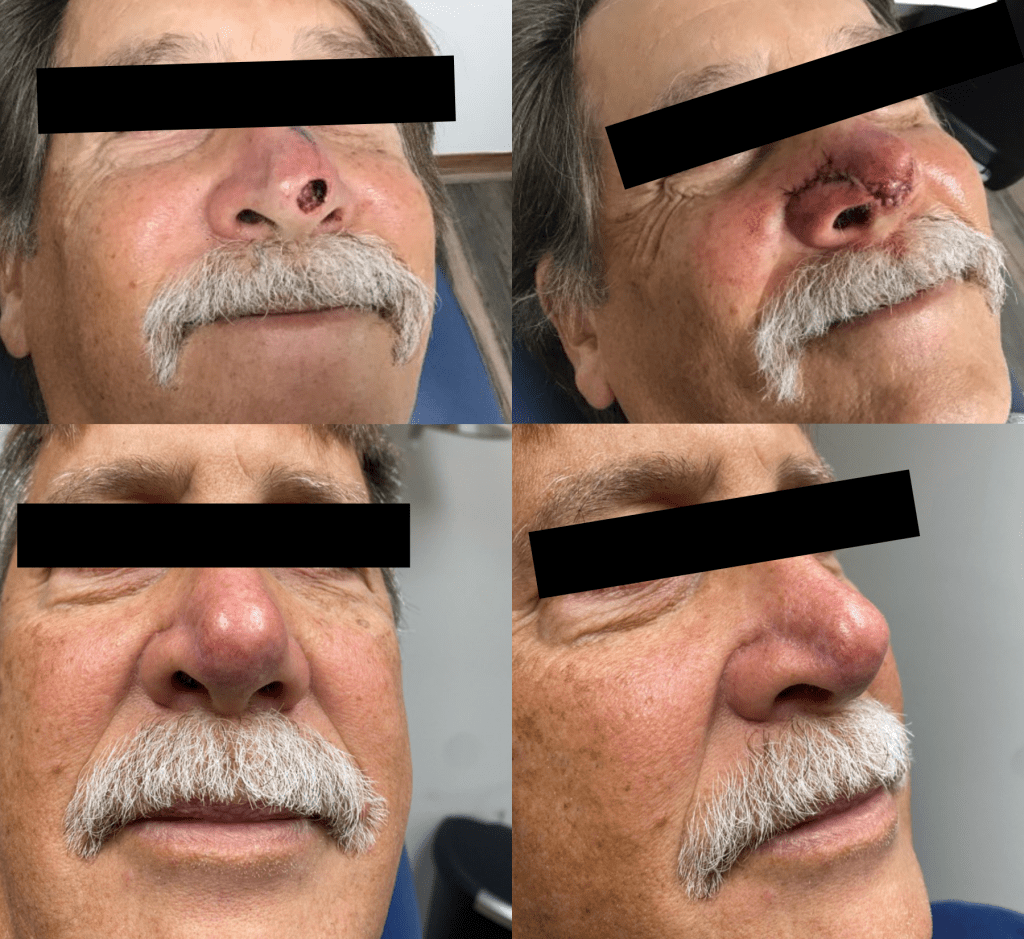Frequently Asked Questions About MOHS Surgery
Dr. Mohs recognized that skin cancers are like a tip of the iceberg, where the cells resemble “roots” growing downward and out into the skin that can only be seen under a microscope. Mohs is a highly specialized and precise treatment for skin cancer where the tumor is removed in stages then frozen and sliced into thin layers by our Mohs Tech, who will then prepare slides for Dr. Wiener to read under the microscope. This process is repeated until the edges of the tissue are clear, leaving only healthy tissue.
Yes. Though your skin cancer may no longer be visible after your biopsy, this typically means the “tip of your iceberg” was removed by the biopsy. There are still cancerous cells that remain in the deeper layers of your skin that will continue to grow downward and out like roots that are not visible to the naked eye.
Mohs micrographic surgery has the highest cure rate, and is appropriate for skin cancer that fall under the following:
- Is in an area for healthy tissue conservation to preserve functional and cosmetic results (ie the face, neck, hands and legs)
- Was previously treated and has reoccurred.
- A larger lesion
- Does not have clear, defined edges
- An aggressive subtype
Please note: this list is not exhaustive of all instances where Mohs is appropriate for your skin cancer.
It is impossible to predict how long each patient’s Mohs procedure will take, but on average each procedure can last several hours. We typically tell our patients to plan to be in the office for half a day, though this may not always be the case. This is due to the time it takes to process the tissue in the office and then the reconstructive surgery.
For the majority of our patient’s we do not require any specific pre-operatives. You can eat and drink your normal breakfast or lunch before coming to the office, and can take all your normal medications unless instructed specifically from your provider. Some patients may need medication prior to procedures, but this will be specified and given to you by your provider before your procedure day.
The Mohs surgery is done as an outpatient procedure where you will be given anesthesia locally to the area. While your tissue is being processed, a temporary bandage will be applied and you will be provided a private waiting room, with amenities to make you as comfortable as possible while you wait.
Once your skin cancer has been removed, Dr. Wiener will explain your best options for wound repair. This could include skin flaps or grafts, which will mean having stitches for 1 or 2 weeks depending on your location. In certain circumstances natural healing is also an option.

